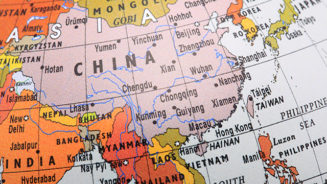European equity small and mid-cap ETF net inflows were $303m (€287m) in February, compared to net inflows into large cap ETFs of $246m.
It was only the second time in history that small company tracker funds saw larger inflows than their larger capitalsied equivalents during months that both had positive inflows.
The rise in demand for small caps ETFs also coincided with an increased appetite for cyclical assets in the investment world.
According to Blackrock, the preference for small caps, which tend to be more domestically focused than larger companies, could be a reflection of fears of an increase in economic protectionism.
“The popularity of small caps reflects a global investor trend favouring domestic exposures, potentially reflecting fears around the decline in globalisation”
“This (the inflows) reflects a global investor trend favouring domestic exposures, potentially reflecting fears around the decline in globalisation,” said Patrick Mattar, a member of the iShares EMEA capital markets team.
 Source: Blackrock
Source: BlackrockBlackrock’s figures follow an analysis by our sister pubication Expert Investor that highlighted the recent outperformance of European small cap equities.
If the popularity of smaller companies persists, this could be good news for embattled active managers that struggle with passive competitors, and bad news for the likes of iShares. Investors traditionally prefer to access the small cap universe through active managers rather than via passive solutions.
Value surge
However, passive managers have other things to be happy about. Macroeconomic optimism is translating into huge flows into value ETFs on both sides of the Atlantic.
Value ETFs, which track companies with low valuations, have seen $2.1bn in net inflows since November, while their low volatility counterparts suffered $1bn in net redemptions.
“Since the US election, there has been a clear rotation from low volatility ETFs towards pro-cyclical factor exposures that tend to outperform in strong macro environments,” said Mattar.
Blackrock also observed large inflows into cyclical sector ETFs such as materials and financials, while healthcare and utilities saw large outflows.




